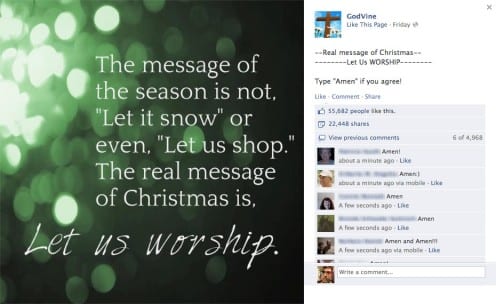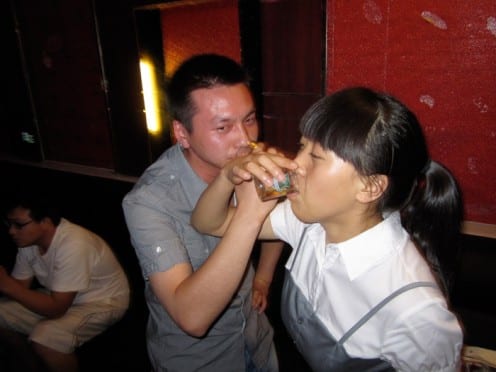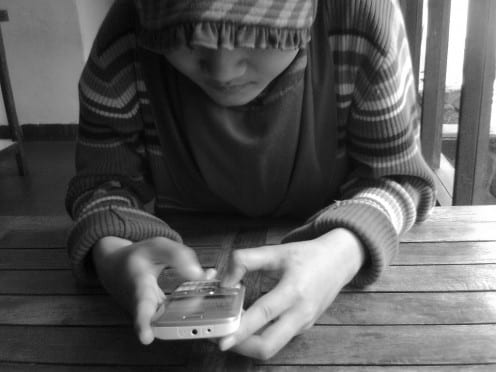Mirror, mirror on the wall, who is the fairest one of all? Social media as framed mirrors
By Xin Yuan Wang, on 2 February 2013
The other day, my previous informant X showed me her latest Facebook status update with a broad smile. The status looked like a quote out of nowhere, which confused me, and the only comment which came from her boyfriend made me even more confused. Even though I could understand each individual word; however the conversation between the post and the comment didn’t make any sense to me at all, there was a clear disconnect. Then X took 5 minutes to explain the whole story, which turned out to be the first time ‘Facebook official claim’ of their relationship which still remained a secret to most of their friends. I was amazed.
Why would people utter tender words of endearment to their lovers on Facebook which otherwise could be done by more private communicative channels? Why should people add confusing posts/comments, which can be only understood by a few intimate friends on Facebook to a huge number of other people? Many studies are concerned about the social media’s potential to destroy privacy, which I would definitely not disagree with. However, in other cases, it seems that those people who are fully aware of the context of social media, intentionally play around with the ‘transparent/private’ features of Facebook to express the most subtle emotions–is this just for fun?
Linguists have long noticed that the existence of ‘indexical signs’ the meaning of which highly depends on the context of social interaction. For example, smoke would be related with many things, but in certain spatio-temporal contexts smoke is an index of fire, however smoke does not ‘stand for’ the fire the way in which the word ‘fire’ refers to fire–here exists a causal rather than symbolic relationship, which ‘points back’ from the index to the referent (Boellstorff 2012:51). Similarly, the indexicality of those wordplays on Facebook, points back to the relationship itself. And the conversation acquires meanings from the ‘Facebook context’, rather than the ‘face value’ of the content. So why bother to post a ‘Facebook official claim’? Partly because the meaning of intimacy comes from the distinction, which suggests the uniqueness of the particular relationship exclusively against other aggregated public/private social relationships on Facebook – that is ‘among all the others, only we can understand what we are talking about’, which gives rise to the establishment of the relationship. In other words, that making things visible is, in itself, constituting relationship. To take this a stage further, Facebook to some extent has become a mirror to make a relationship visible–just like you can’t see yourself without a mirror.
The sociologist Goffman (1975) used the word ‘frame’ to explain how people’s behavior is cued by the frames which constitute the context of action. The Facebook ‘frame’ tells us how to interpret others’ behaviour as well as our own, but mostly, such framed activities are unconsciously embedded in the social expectations and understanding of what is or is not appropriate. The ‘public’ represented by Facebook is more often than not the people one knows privately (at least the anonymity of ‘real-name’ social media is limited compared to the other online communities), and there are consequences of addressing such a large body of social connections through ‘one-to-many’ texts or photos on Facebook rather than other personal communicative channels with particular individuals. Just as Miller argues “we have reached the point where Facebook may be regarded as providing a crucial medium of visibility and public witnessing” (2011:180). In such a frame, as long as people get used to the ‘public gaze’ or ‘participatory surveillance’, they start to develop a strategy to address the ‘public’. As X said “He knows only I know and others don’t know”, also in a way the invisible confused ‘public’ has contributed to the perception of the distinction which has added meaningful significance to their intimate relationship.
So, “Mirror, mirror on the wall, who is the fairest one of all?” does the fairy tale ring a bell when you look into the framed mirror of Facebook every day? The question why do people ask the mirror matters as much as the mirror’s answer in the eyes of digital anthropologists.
References
Goffman, E. 1975. Frame Analysis. Harmondsworth: Penguin.
Miller, D. 2011. Tales from Facebook. Cambridge: Polity Press.
Boellstorff, T. 2012. “Rethinking Digital Anthropology”, in Heather A. Horst & Daniel Miller (eds.) 2012. Digital Anthropology. London: Berg.
 Close
Close











